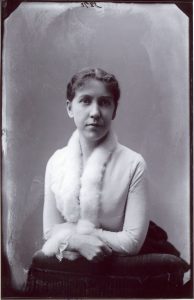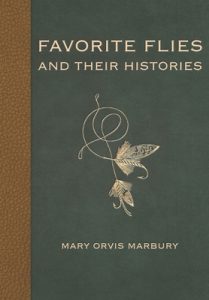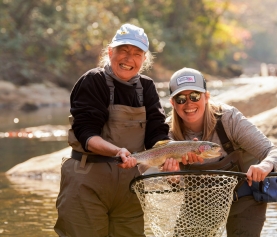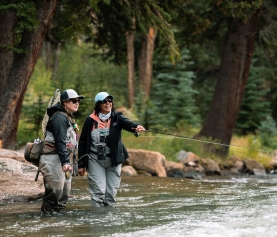The Women Who Cast Before Us: Honoring Mary Orvis Marbury and the Legacy of Hope

As we celebrate Women’s History Month, we reflect on the women who paved the way—not only in fly fishing but in forging communities built on strength, resilience, and healing. At Casting for Recovery (CfR), no story embodies this spirit quite like that of Mary Orvis Marbury.
More than a century before CfR was founded, Mary Orvis Marbury was casting lines and breaking barriers. Her leadership, innovation, and love of fly fishing left an imprint on the sport that continues to inspire us today. She understood, as we see in every CfR retreat, that fly fishing offers not only recreation but also restoration.
Who Was Mary Orvis Marbury?
Born in 1856 in Manchester, Vermont, Mary was the eldest child and only daughter of Charles F. Orvis, the founder of the now world-renowned Orvis Company. At a time when women’s opportunities were limited, Mary stepped into a central role within her family’s company.
By the late 1870s, she was managing the Orvis fly-tying department—a groundbreaking position that established her influence in setting the gold standard for American fly patterns. But Mary was more than a manager; she was a historian, teacher, connector, and innovator.
Recognizing the importance of preserving diverse regional fly patterns developed by anglers across the country, Mary compiled and edited “Favorite Flies and Their Histories,” published in 1892. This landmark work detailed over 300 fly patterns, accompanied by letters from anglers and fly tiers throughout the United States and Canada. The book became an authoritative resource on fly patterns of the era and remains a treasured reference in fly fishing history.
Through her work, Mary didn’t just preserve the past—she helped shape the future. She elevated the craft of fly tying, set new standards for quality and creativity, and proved that women had a significant place in the leadership, innovation, and artistry of the sport.
A Legacy of Serenity and Hope
Beyond her influence on fly fishing itself, Mary deeply understood the emotional and spiritual benefits of time on the water. In her writing, she captured sentiments echoed by CfR participants—the way fly fishing fosters peace, presence, and renewal.
In “Favorite Flies and Their Histories,” Mary reflects:
“Who of all that go a-fishing will deny the feeling of a calm content and the glow of satisfaction consequent upon a creel a little heavier or a fish a little larger than that of his fellow-fisherman?”
In these words, Mary captures the timeless joy of a good day on the water—the sense of calm contentment and quiet pride that comes from the simple act of casting, connecting, and being present in nature. It’s a feeling that resonates deeply at CfR retreats: the encouragement between new friends, the shared celebration of each moment, and the confidence that grows with every cast.
While the fish are never the sole focus, the glow of satisfaction—whether from time spent in nature, new skills learned, or friendships formed—is universal. In that, we find healing.
For the women we serve—many navigating life after breast cancer—this sense of “calm content” is more than a pleasant side effect; it’s a lifeline. It’s a reminder that hope is always within reach and that healing often begins when we give ourselves permission to pause, breathe, and simply be present in the beauty of nature.
Carrying Her Legacy Forward
This Women’s History Month, we honor Mary Orvis Marbury not just as a trailblazer in fly fishing but as an early champion of the idea that time on the water can restore the soul.
We see her legacy in every retreat:
- In the woman who lands her first fish after treatment.
- In the laughter shared at the tying table.
- In the friendships that form beside the riverbank.
Mary helped shape the future of fly fishing. At Casting for Recovery, we are proud to carry that future forward—ensuring that women facing breast cancer have the chance to experience the serenity, strength, and community that Mary knew so well.


















